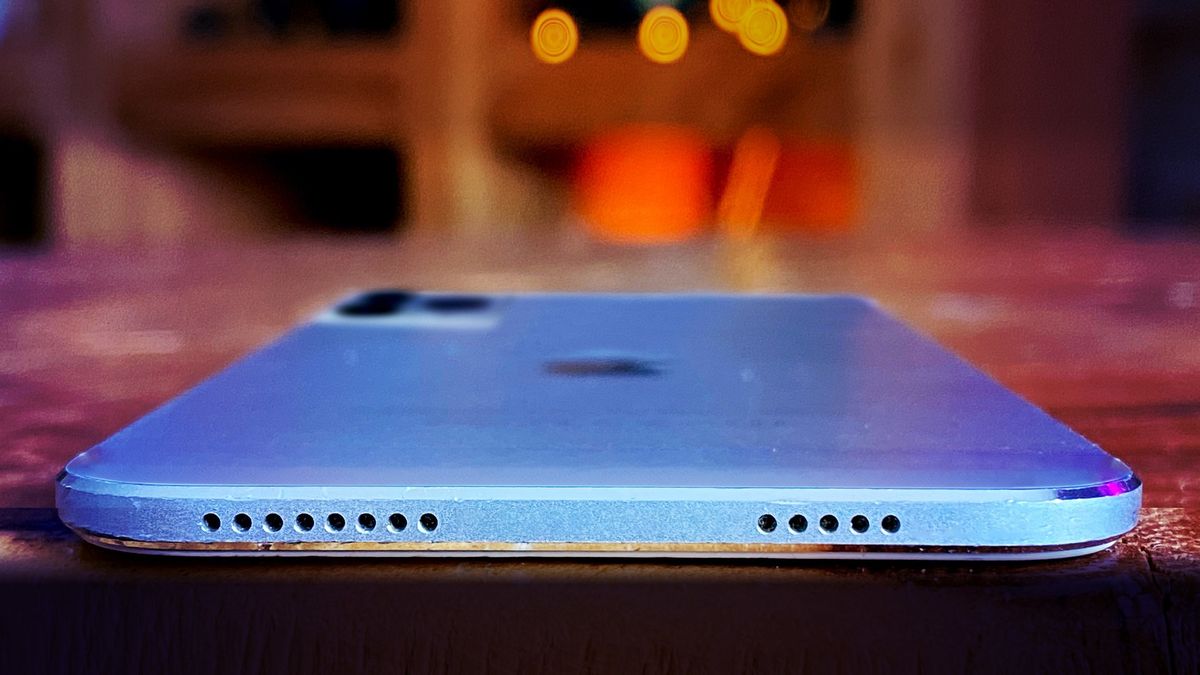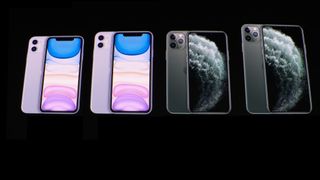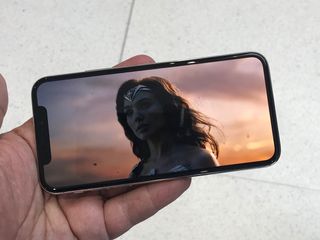5 big questions about iPhone 12

Noted supply-chain exfiltrator extraordinaire Kuo Ming-Chi of TF International Securities dropped another spoiler bomb this week, this time concerning the five — yes, five — new iPhones he's expecting from Apple in 2020. Including 4 versions of the iPhone 12 and, this time, all OLED.
It lines up, in part, with similar supply-chain exfiltrations earlier in the week from Samik Chatterjee of JPMorgan, who also suggested Apple might start splitting its release schedule between spring and the traditional fall and…
I have so many questions.
1. Why would Apple split the iPhone schedule?
Now, this is a rumor for the 2021 iPhone 13 lineup, not next year's iPhone 12, which is why I want to address it first.
So, Apple has been incredibly successful with their blockbuster fall events, hitting the stage every September with new iPhones that typically hit the shelves just a couple of weeks later. While it's not hard to see them messing with the formula, it's tricky.
The original iPhone was announced early but release in the summer. The iPhones 3G to 4 were announced and released in the summer. The 4s was announced and released in October. The iPhone 5 took over the center September stage from the iPod and that's where the announcements have stayed since, though the iPhone X and XR both hit the shelves a month or so later. All, still, just in time for the blowout holiday shopping quarter.
But, other companies have also learned to counter-program those big fall releases. Samsung from early on. While Apple was typically quiet in the spring, as far as phones go, Samsung took advantage of shows like Mobile World Congress and now their own Unpacked to launch the Galaxy S line. The fall, then, was left for the increasingly popular Galaxy Note.
Master your iPhone in minutes
iMore offers spot-on advice and guidance from our team of experts, with decades of Apple device experience to lean on. Learn more with iMore!
Huawei does similar with the P in the spring and the Mate in the fall. Though, both of them release so many phones so always these days they're probably just trying to cram them all in like Disney does movies.
Still, OnePlus has the regular new version in the spring and the slightly souped up T-version in the fall. Even Google did the Pixel 3 in the fall of 2018 and the Pixel 3a in the spring of 2019.
Point being, they're all getting in the media and retail spotlights, and the public eye, twice or more often than Apple. And, when people go to buy from those brands, there's always at least one model that's less than 6 months old.
In a mature market, those are things that'd benefit Apple as well.
Apple has done a few iPhone things in the spring. The iPhone SE was announced and released in the spring of 2016 and, product RED versions of the iPhone 7 and iPhone 8 were debuted in the springs of 2017 ad 2018 respectively. New entry-levels and new color variants aren't quite the same, though.
So, it's not so much that Apple would go to a split release schedule that intrigues me — it makes the kind of sense that does — it's how.
Does Apple release the base-line new iPhones in the fall, because from the XR to the 11, they're most popular and will sell the most over the big holiday quarter, and then follow up with the Pros in the spring? Basically, the opposite of what everyone else is doing…
Or, does Apple release the Pro versions in the fall, when the new chipsets that come with them are smoking fresh as well, and let the more expensive models get as much of those first-out-the-gate and holiday bumps as possible?
Or, contrary to the rumor, do they keep the flagships in the fall and start updating the entry-level, SE lines on a yearly basis, starting back up again in the spring?
I'm leaning to regulars in the spring, pros in the fall, but given me your best analysis in the comments.
2. Why would Apple release four new flagships?
Time was we got one new iPhone a year. Then, Apple experimented with two: the iPhone 5s, or the typical blockbuster film that spiked at launch and then coasted down the rest of the year, and the ill-fated iPhone 5c, which was meant to be more like a TV show that could just sit on the shelves and sell for the whole season.

And yeah, my calling it ill-fated was a big old spoiler for just how exactly that worked out.
But, Apple stuck with the dual phone format, just tweaked it into the big iPhone 6 and bigger iPhone 6 Plus. Then, a couple of years later, did three phones with the iPhone SE in the spring and iPhones 7 and 7 Plus in the fall. The next year we got three phones again, the iPhone 8, 8 Plus, and all-new iPhone X, but all in the fall. Same with the XS, XS Max, and XR, and now, 11, 11 Pro, and 11 Pro Max.
But, the way they all broke down were two high end models, one normal sized and one Max, but only one baseline model, sized in between.
Apple discovered with the original iPhone SE that there wasn't just a less-expensive market but also a less-enormous model. Some people wanted not just cheaper iPhones but physically smaller ones. Even and maybe especially if they came at a premium.
Again, it just makes sense to do more segmentation.
But, the rumored sizes are curious. 5.4-inch and 6.1-inch iPhones 12, and 6.1-inch and 6.7-inch iPhones 12 Pro. Nevermind if that means 12 and 12 Max, 12 Pro and 12 Pro Max, the baseline will be getting a second, smaller size to appeal to people who love smaller phones. But the Pro models will be losing their smaller size with both models shifting bigger.
Maybe that's market research at the high-end, maybe that's due to how much space inside Apple needs to cram in that new time-of-flight enabled AR camera on the back.
Either way, it feels like a size gap at the very top. Let me know if you agree or not in the comments.
3. Why would Apple go all-in on OLED?
All those new regular and Pro phones are also rumored to be all OLED. No more Liquid Retina LCD on the baseline models. Up until now, Apple kept the iPhone XR and iPhone 11 on LCD because of price. Even though Apple sets the spec, Samsung charges them a small fortune to manufacture it on their industry-leading process, and there's still not enough to meet demand. Manufacturers and capacities tend to increase over time, though, and that's what drives down cost.

Now, on one hand, that's great for people who want all the advantage of OLED, including and especially the high-dynamic range with deep, inky blacks and nits and nits of sustained brightness. The range that makes all this new Disney+ and Apple TV+ content just look so damn good. It's also great because the displays are thinner thanks to the lack of a separate backlight layer, which means the Lightning Port will no longer have to be out of alignment on the chassis and my eye can stop twitching every time I see it. And, sure, yeah, the space freed up can go to stuff like even more battery.
On the other hand, it would mean no LCD alternative for people who have problems with OLED displays. Specifically, the pulse-width modulation — or PWM — used for lower brightness levels. Some people can see the flashes and claim it gives them everything from eyestrain to tension headaches to full-on migraines. See Aaron at Zollotech.
It's possible Apple can mitigate PWM or switch to a different method, so this is less a question than a hope that the displays stay as accessible as possible to as many customers as possible.
And that we get to mini and microLED as fast as possible so we can finally keep all the OLED benefits without all its bad characteristics.
4. Why would Apple go all-in on 5G?
In 2019 there was a lot of really bad, really dumb doomsaying around the iPhone 11 not having 5G, as if 5G was a real thing in 2019 and the first-gen 5G modems were anything anyone would want. But, will 5G rollouts really be any better in 2020, enough for the rumors that say Apple will be going all-in on the technology for the iPhone 12?
Well, first, 5G is really a few different things. There's sub-6, or low band 5G, mid-band 5G, and the higher band mmWave or millimeter wave.
mmWave is what most people think about when they think of 5G because it's the hella fast one. The one that lets you download movies in a few seconds and, one day, stream high density VR experiences. But it's also the one that can't penetrate a fig leaf on a sunny day and needs a cluster of towers every few steps to even be functional… if you turn, tilt, and hop up and down just right.
But, sub-6 5g is different. It's not faster but it's fuller as in way less subject to congestion. It also has much larger range and will roll out in more places more quickly. More importantly, as my friend and colleague Daniel Bader keeps pointing out, it will finally deliver on the promise of LTE for far more people.
Which may sound funny to you if you live in a place with amazing LTE speeds and reliability. But a lot of people don't. A lot of people have incredibly bad LTE. And this will give them those speeds but… you know, actually work.
So, my question here isn't why Apple would go 5G for the iPhone 12, but how much will be sub-6 and how much will be mmWave. Because, frankly, I still don't know if mmWave will ever be a real consumer thing or if it'll just end up being something else, like WiMax.
Whether Apple supports it or not, and how much, might be our first clue. But let me know what you think in the comments.
5. Would Apple really make an iPhone with no ports?
The last big rumor has also been the most controversial — so many hot takes already. So many. So spicy hot — that Apple is planning to ditch the Lightning connector in 2021. Not to replace it with USB-C the way it replaced 30-pin Dock in 2012. No, to delete it the way they deleted the headphone jack in 2016. To kill it just to watch it die.
Now, this will come as no surprise to anyone who's been following my work for a while. I've been writing about it since 2016. TL;DR: Manufacturers want to get rid of as many mechanical parts as they can, because mechanical parts fail.
Apple switched from mechanical to virtual Home buttons with the iPhone 7 to get around failure rates. Remember, previously, ludicrously, people were using assistive touch to get around wearing out or already broken mechanical home buttons.
As much as some people are still livid over losing the headphone jack, it's not only freed up space inside it's improved water resistance. Getting the jack wet and then plugging it in was a problem before.
Same for the Lightning port.
The Apple Watch never shipped with a port. Well, not a user-accessible one anyway. There's a mini Lightning port sealed up and hidden away inside the band groove for technicians to use if and when they need to service it.
More recently, Apple ditched the USB-C port on the Apple TV 4K. Well, again, for users. There's a port hidden away inside if you know where to look.
Meizu has already shipped a portless phone. There have been rumors about Google having portless Pixel phone prototypes in the past. I'd be shocked if Apple and pretty much every other phone company didn't have portless prototypes as well.
Everyone wanted to kill the headphone jack for years. HTC even did it for a while, including on the original Android Phone, the G1. Technology just wasn't good enough to even begin to compensate. Until AirPods and truly wireless headphones. Now, almost everyone has deleted it, including Samsung — yes, joining notches in becoming the butt of their own jokes.
Same with Lightning and USB. But, the technology to do charging, large file transfer, and remote recovery has to all be in place.
We have Qi charging now. We have WiFi 6 now. So far, so good. But remote recovery?
If your watch or TV box fails during a software update or otherwise bricks and you can't plug it in and do a recovery or go all DFU on its apps, and you have to take it or send it in for service, that's incredibly inconvenient. But for your phone, the most important device in most people's lives? That's a show stopper.
And for pros, especially as phones inch towards 8K video — which would let you pan-and-scan, reframe, and punch in for way better 4K, having a hardline would still be far better than any WiFi. Same with fast charging in a pinch.
Never mind everyone currently plugging in for CarPlay, because the auto industry is positively glacial when it comes to adopting new technologies. And I just can't take the dongle jokes. I can't.
So, my question here is, why on the high-end pro models? And is remote recovery really going to be solid enough for Apple to ship a purely wireless iPhone… and worse, for every vendor nowhere nearly as good at software to fast follow?
I'll guess we'll have to wait and see.

Rene Ritchie is one of the most respected Apple analysts in the business, reaching a combined audience of over 40 million readers a month. His YouTube channel, Vector, has over 90 thousand subscribers and 14 million views and his podcasts, including Debug, have been downloaded over 20 million times. He also regularly co-hosts MacBreak Weekly for the TWiT network and co-hosted CES Live! and Talk Mobile. Based in Montreal, Rene is a former director of product marketing, web developer, and graphic designer. He's authored several books and appeared on numerous television and radio segments to discuss Apple and the technology industry. When not working, he likes to cook, grapple, and spend time with his friends and family.











